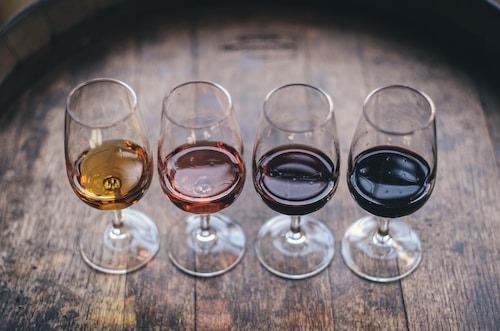Wine Tourism Increasing in Post COVID-19 South Africa

The COVID-19 pandemic severely disrupted South Africa's wine industry, especially wine tourism, a vital part of the industry. Strict travel restrictions, both domestically and internationally, led to a drastic drop in visitor numbers, significantly affecting revenue. Many wineries had to close their tasting rooms and cancel events temporarily. Four separate alcohol sales bans, totaling to 161 days, were enforced between March 26, 2020 to July 25, 2021. The bans further exacerbated the dire situation, resulting in an estimated 80 wineries and 350 producers closing their doors permanently between 2020 and 2023. As illustrated in Figure 1, international visitor arrivals to Cape Town International Airport, located in the Western Cape where the vast majority of wine farms are located in South Africa, dropped 93% in 2020. This, along with a decline in domestic tourism, resulted in wine tourism’s contribution to South Africa’s gross domestic product (GDP) plummeting from USD 410 million (ZAR 7.2 billion) in 2019 to USD 150 million (ZAR 2.7 billion) in 2020.
According to Vinpro, a non-profit company which represents South African wine producers, cellars and industry stakeholders, the turnover from wine tourism activities represented 14.7% of the total turnover from all activities conducted by wine cellars that crush grapes. Micro wine cellars (with a total turnover of less than ZAR 10 million) are most dependent on wine tourism, with 41.3% of their total turnover consisting of wine tourism activities. Thus, the decline in wine tourism severely impacted the wine industry in South Africa with an estimated loss of USD 320 million (ZAR 5.7 billion) in direct sales and USD 250 million (ZAR 4.5 billion) in wine tourism by the end of 2020. This is evidenced by domestic wine consumption dropping by 20.51% from 3.9 million hectoliters (hl) in 2019 to 3.1 million hl in 2020.
Figure 1. Total International Arrivals at Cape Town International Airport 2012-2023

Source: Airports Company South Africa
Following the removal of alcohol sales bans and COVID-19 lockdown movement and travel restrictions both internationally and in South Africa, the wine industry started to recover in 2021 and 2022. Wine tourism’s contribution to South Africa’s GDP recovered to R4.1 billion in 2021 with a further recovery to R5.7 billion by the end of 2022. This was largely due to increased international tourist arrivals at Cape Town International Airport. Tourist arrivals rebounded to 1.07 million in 2022/23, near pre-pandemic levels, bringing renewed spending power into the South African wine industry. As illustrated in Figure 2, tourist volumes in South Africa slowly ramp up towards the summer months (Dec-Feb) when it reaches a peak and then slowly winds down towards winter with a slight peak during July each year. Tourist arrivals remained high as South Africa started heading into winter 2023 and was the highest on record during the Feb-23 to May-23 period. Based on these 2023 numbers and pre-pandemic data, tourist volumes are projected to reach around 1.2 to 1.3 million arrivals by the end of the 2023/24 season, higher than pre-pandemic levels and the highest on record.
Figure 2. Monthly International Arrivals at Cape Town International Airport 2017-2023

Source: Airports Company South Africa
Domestic arrivals at Cape Town International Airport have not rebounded as quickly as international arrivals. Based on the last six months of available data (Dec-22 to May-23) domestic arrivals have only grown by 8% YoY. Extrapolating this growth rate towards the end of 2023/24 season suggests that domestic arrivals will reach 3.2 to 3.3 million, far below the pre-pandemic volumes of 4 to 4.1 million annually. This is most likely due to the economic difficulties that the South African economy has suffered coupled with slow economic growth, high interest rates and high levels of inflation. The combination of these factors have put South African citizens under economic pressure, likely resulting in a cutback on travel and tourism.
Figure 3. Total Domestic Arrivals at Cape Town International Airport 2012-2023

Source: Airports Company South Africa
Based on 2019 pre-pandemic calculations using data from South African Tourism, foreign arrivals in South Africa account for roughly two-thirds of tourism spending while domestic overnight tourists account for the remaining one-third. Taking into account the return to pre-pandemic levels of international arrivals and the marginal but steady growth of domestic tourism, tourism expenditure and the wine tourism sector’s contribution to GDP is estimated to return to near pre-pandemic levels in the 2023/24 season. In 2022 and 2023, many wine-related events and festivities, such as Franschhoek Uncorked and Annerkant die Berg, are also returning to the social calendar as the South African wine industry recovers from the COVID-19 pandemic, further increasing tourism volumes and expenditure.
For a detailed analysis about the South African wine market, read the Wine Report: South Africa 2023 on Tridge's website.
